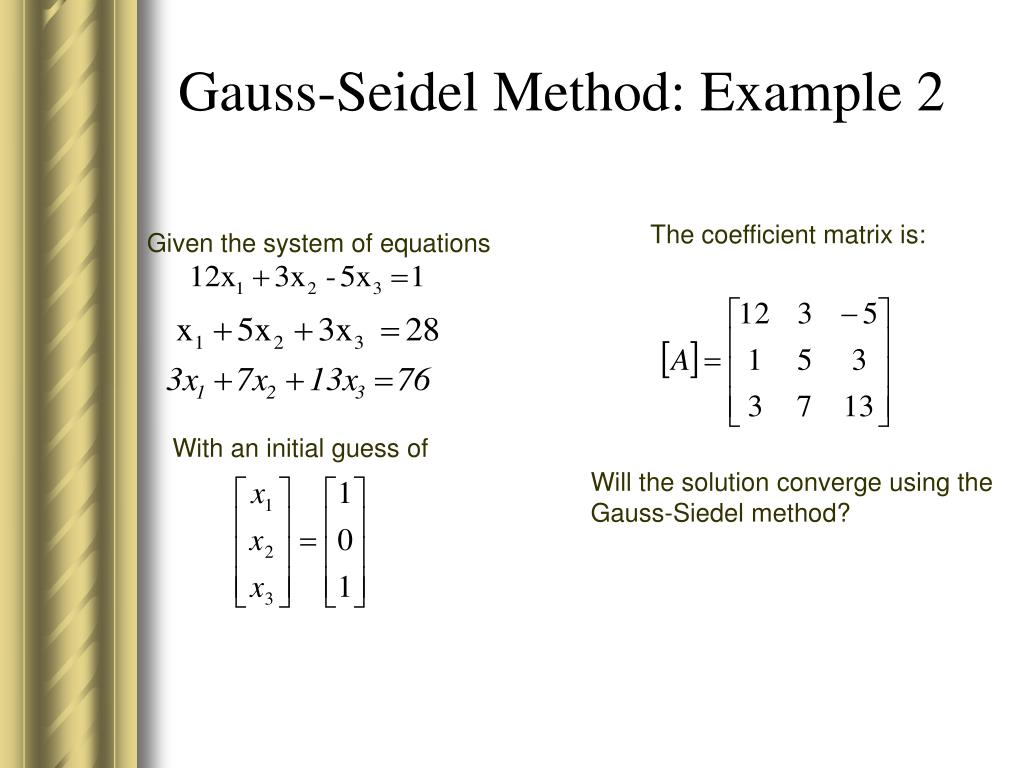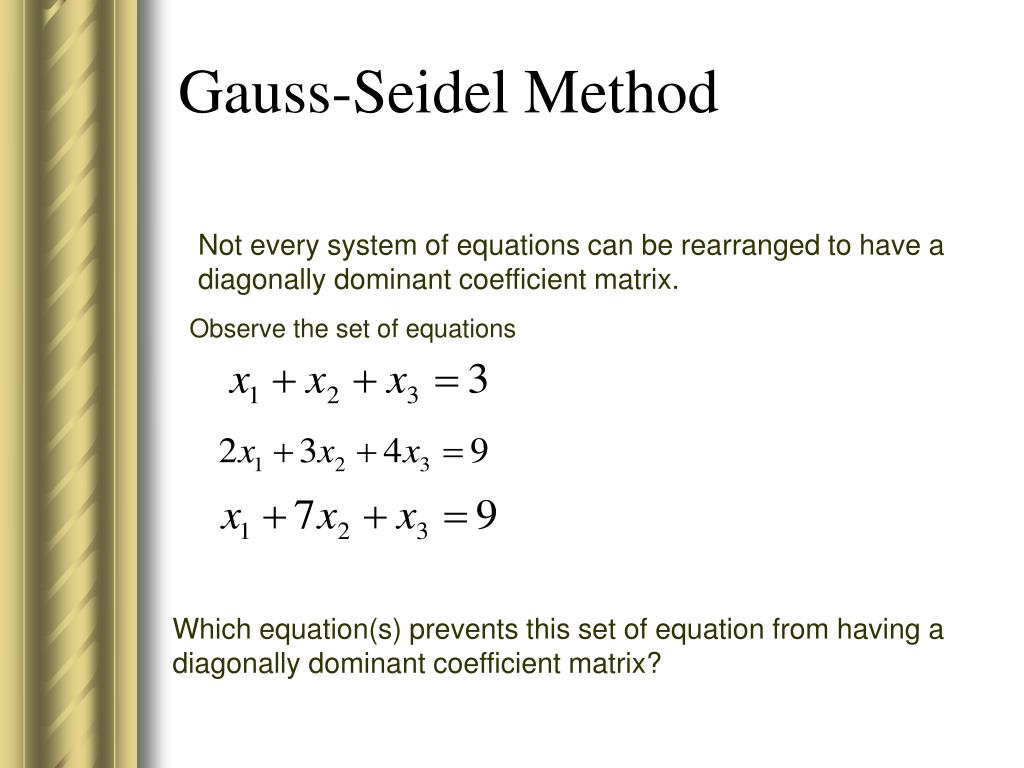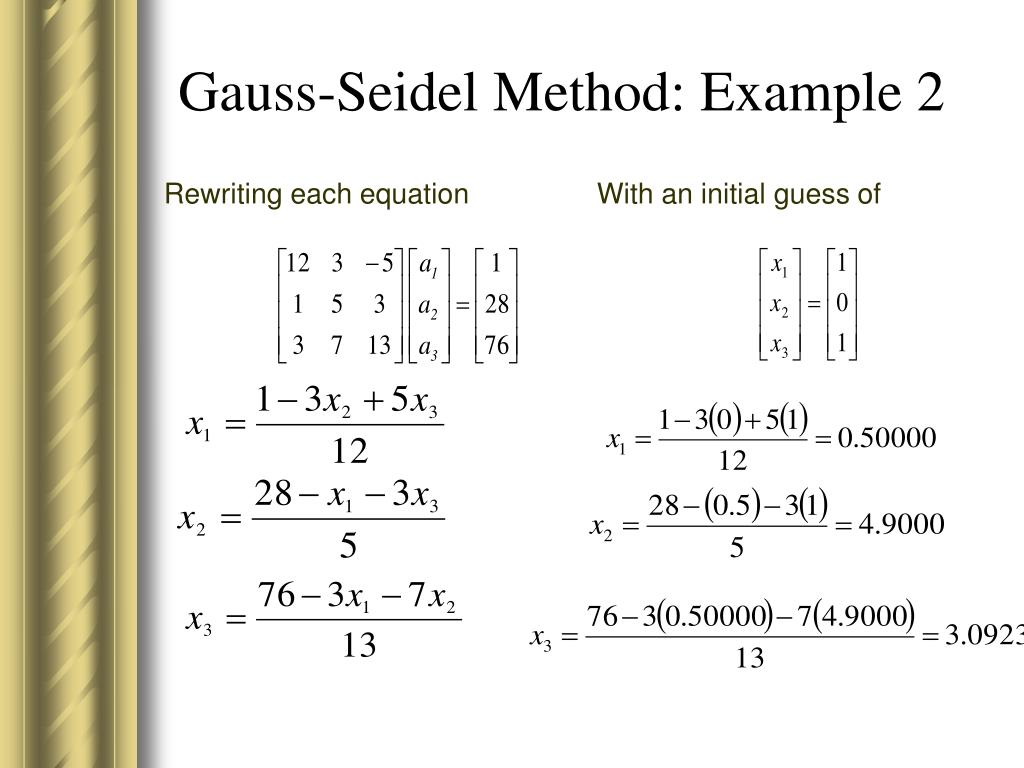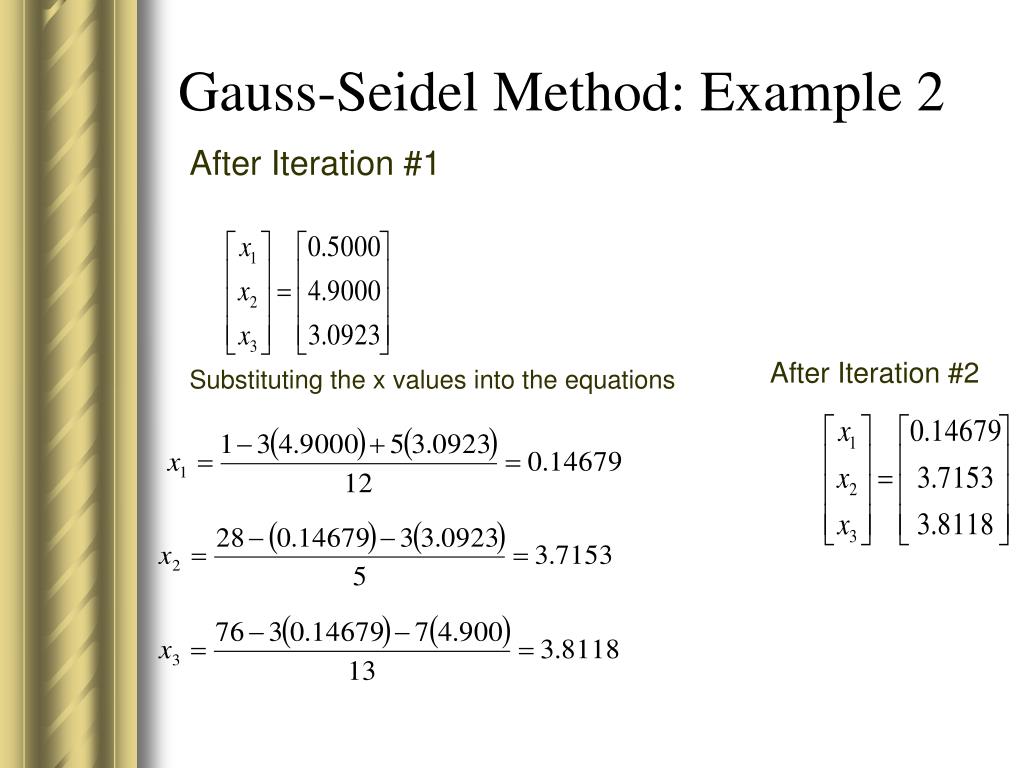Gauss Siedal Method Presentation
| Introduction to Gauss Seidel Method | ||
|---|---|---|
| Gauss Seidel Method is an iterative numerical method used to solve linear systems of equations. It is named after the German mathematicians Carl Friedrich Gauss and Philipp Ludwig von Seidel. This method is widely used in various fields such as engineering, physics, and computer science. | ||
| 1 | ||
| How Gauss Seidel Method Works | ||
|---|---|---|
| The method starts with an initial guess for the solution vector. It then iteratively updates the solution vector using the values calculated from the previous iteration. Each equation in the system is solved for its unknown variable using the updated values of the other variables. | ||
| 2 | ||
| Advantages of Gauss Seidel Method | ||
|---|---|---|
| The Gauss Seidel method often converges faster than other iterative methods. It is relatively easy to implement and understand. This method can be applied to both diagonally dominant and non-diagonally dominant systems of equations. | ||
| 3 | ||
| Limitations of Gauss Seidel Method | ||
|---|---|---|
| The method may not converge for some types of systems, especially if they are not diagonally dominant. The convergence of the method can be sensitive to the initial guess. It may be slower to converge for large systems of equations compared to other methods. | ||
| 4 | ||
| Convergence Criteria for Gauss Seidel Method | ||
|---|---|---|
| The convergence of the Gauss Seidel method can be determined by checking the spectral radius of the iteration matrix. If the spectral radius is less than 1, the method is guaranteed to converge. Another common convergence criterion is to check the absolute difference between consecutive iterations and compare it to a predefined tolerance. | ||
| 5 | ||
| Applications of Gauss Seidel Method | ||
|---|---|---|
| The Gauss Seidel method is used in solving systems of linear equations in circuit analysis. It is also used in solving partial differential equations, such as the Poisson equation and the heat equation. This method can be applied in optimization problems, such as finding the minimum or maximum of a function. This concludes the presentation on the Gauss Seidel Method. Thank you for your attention. | ||
| 6 | ||



